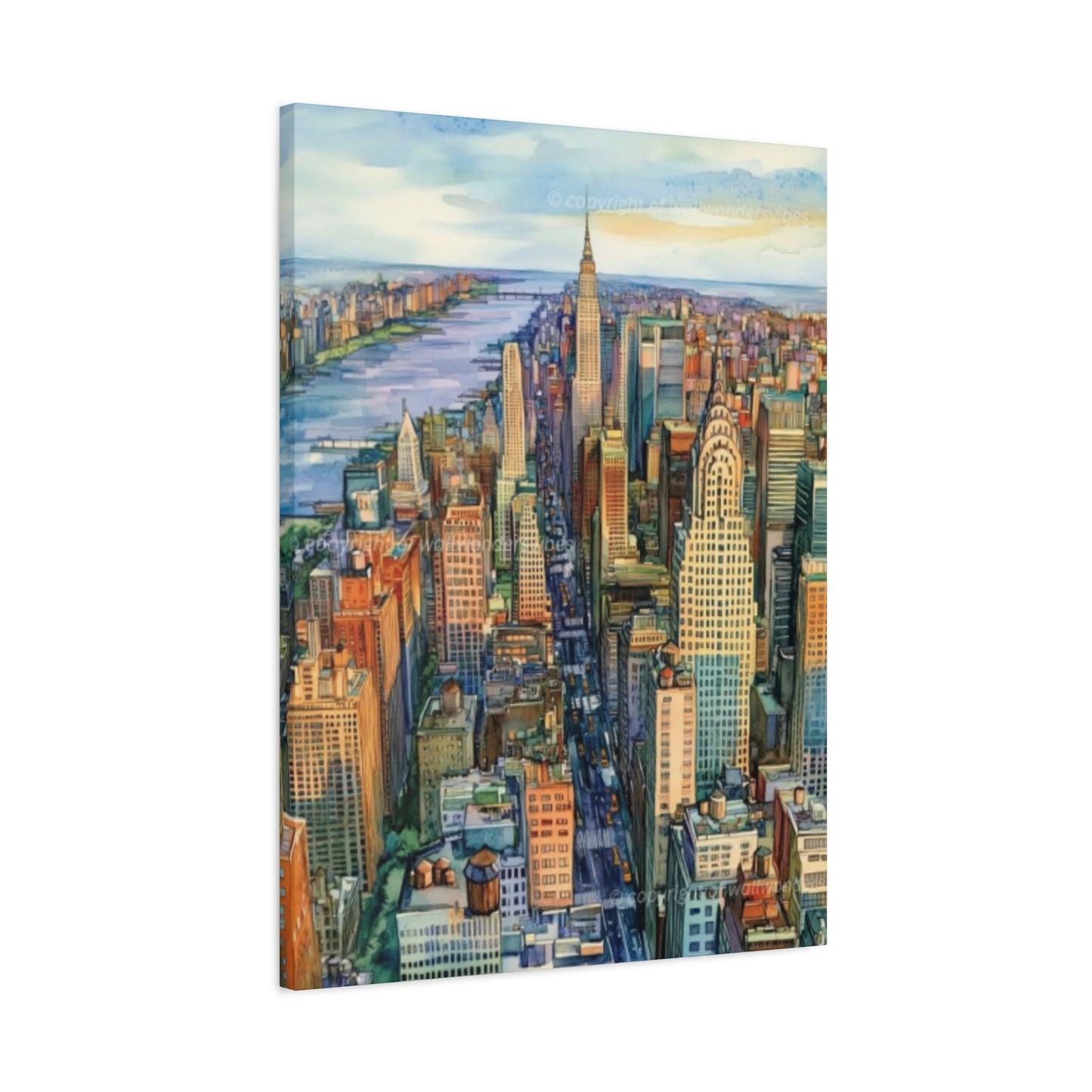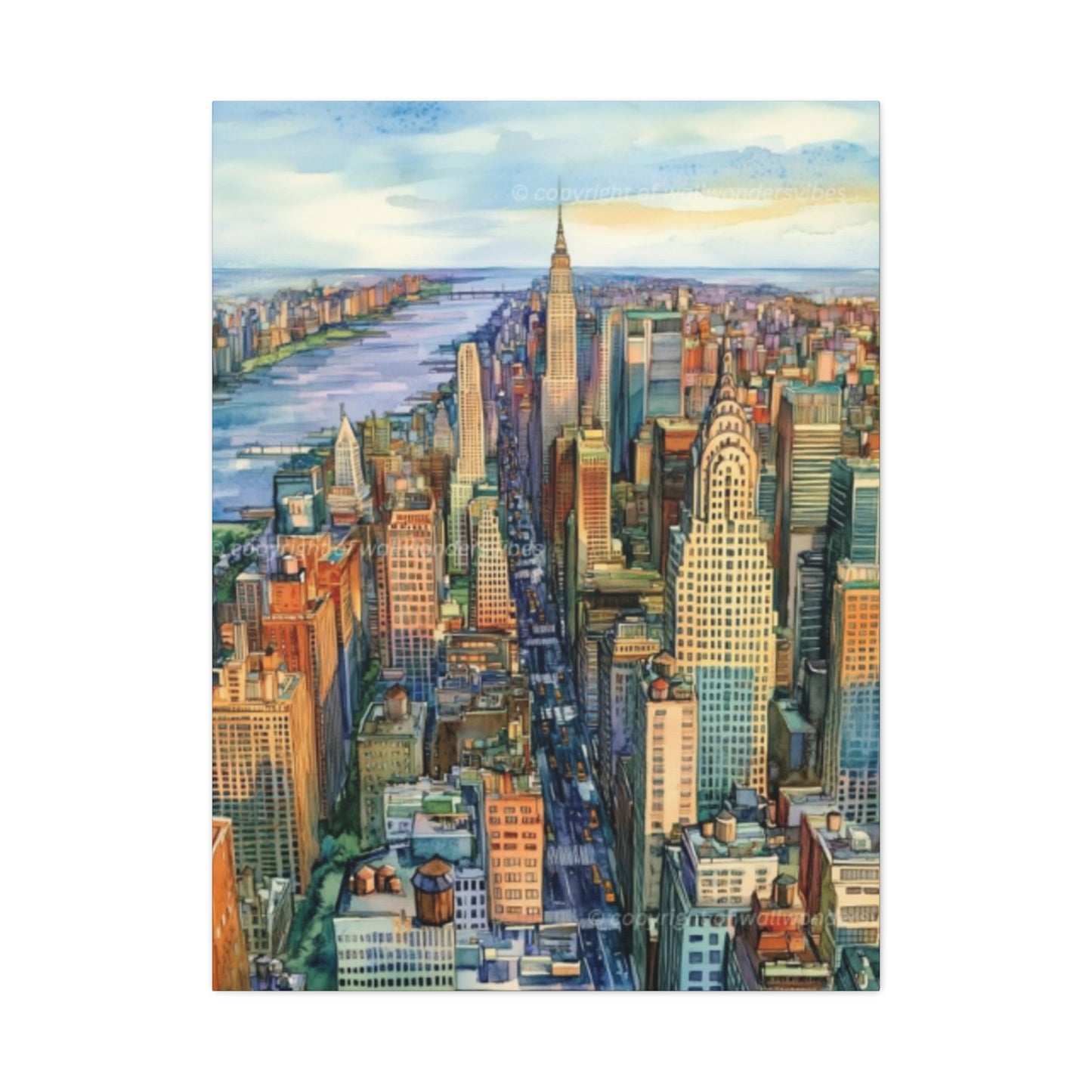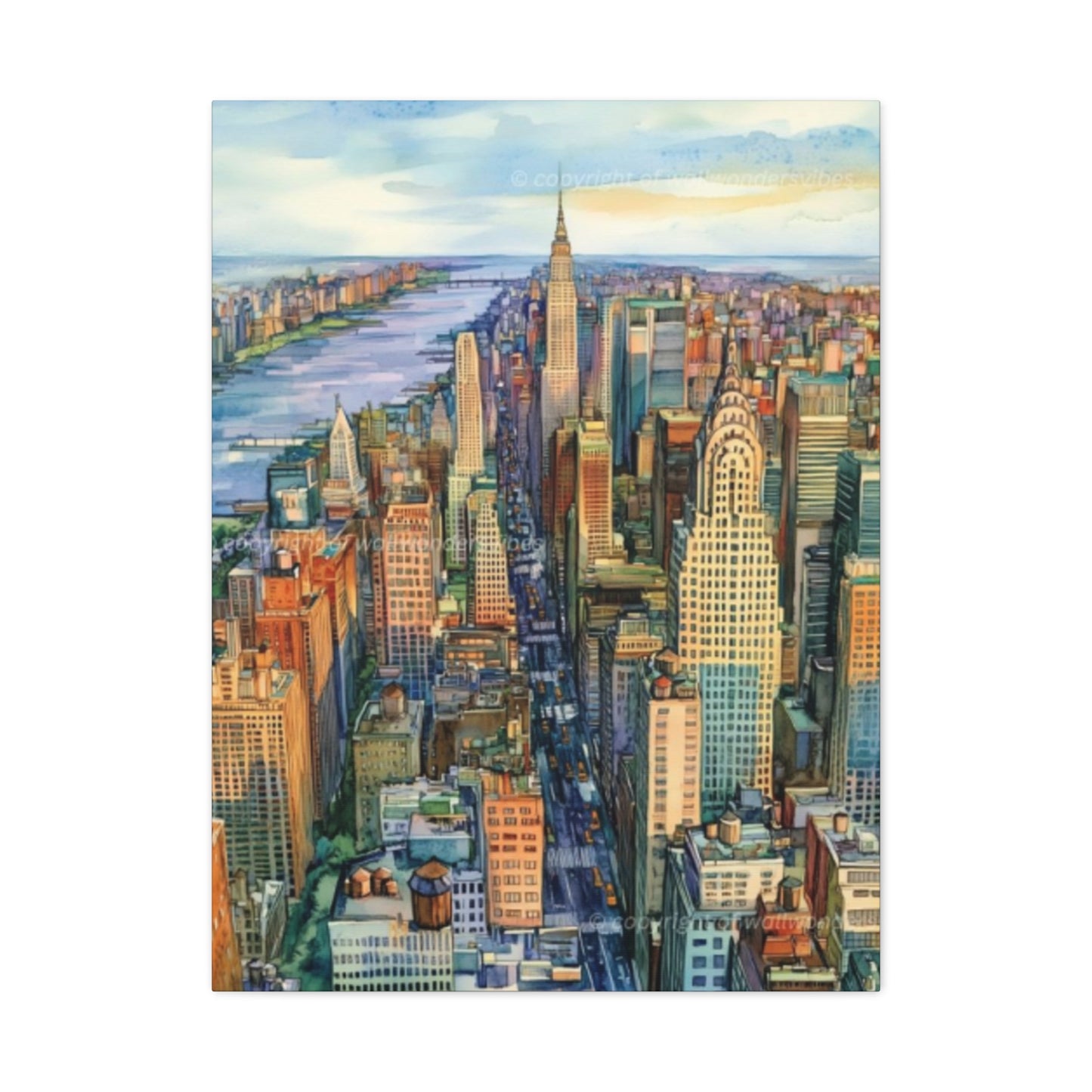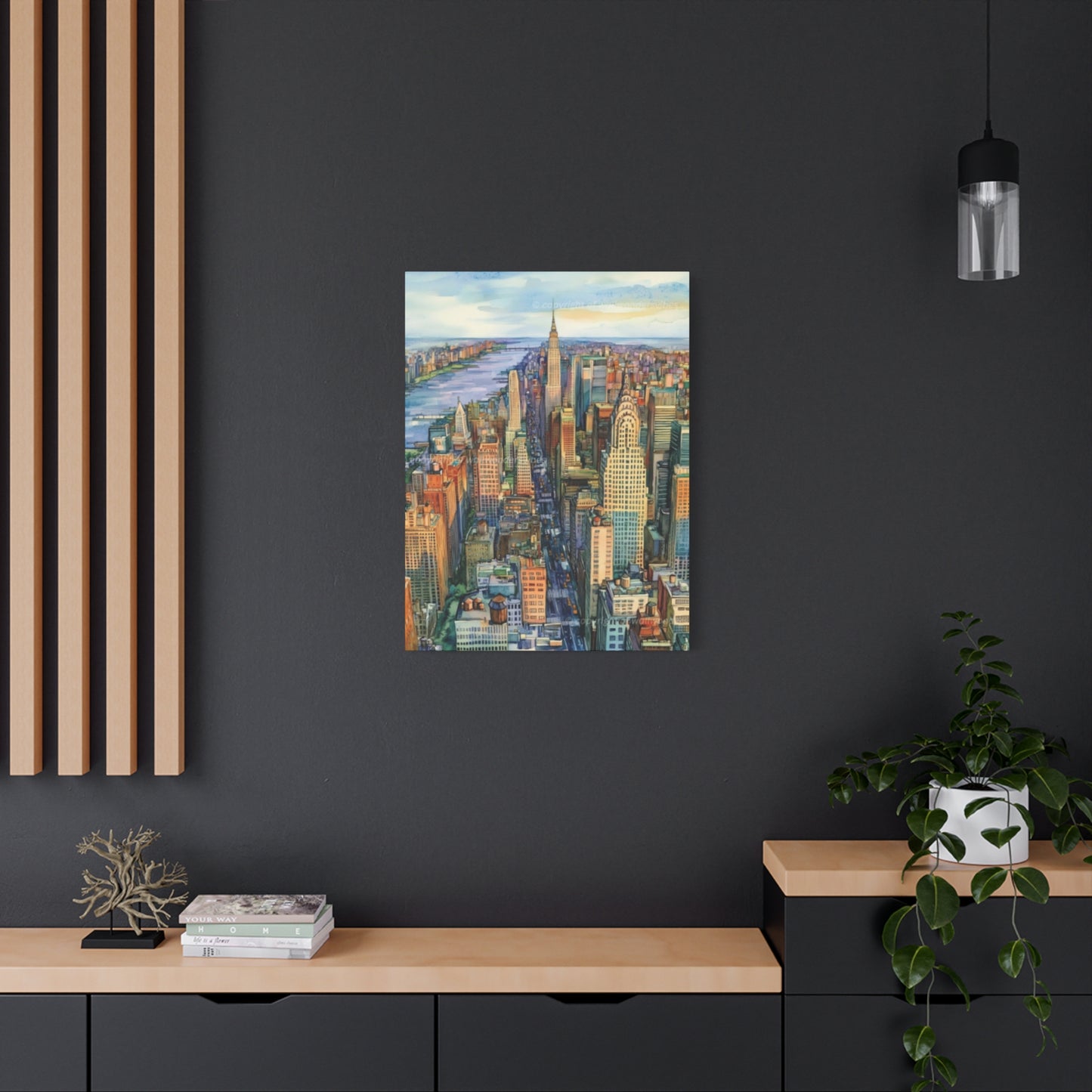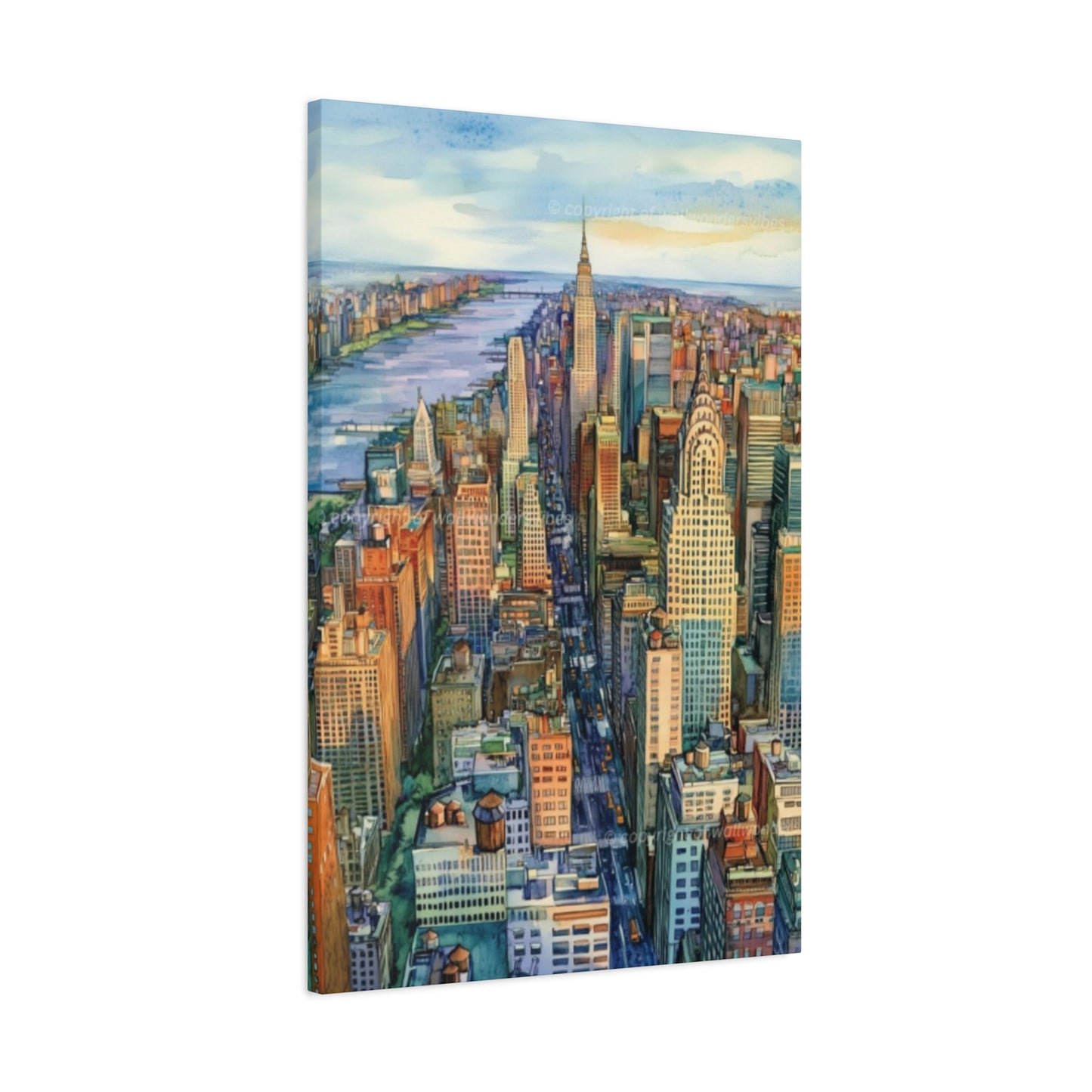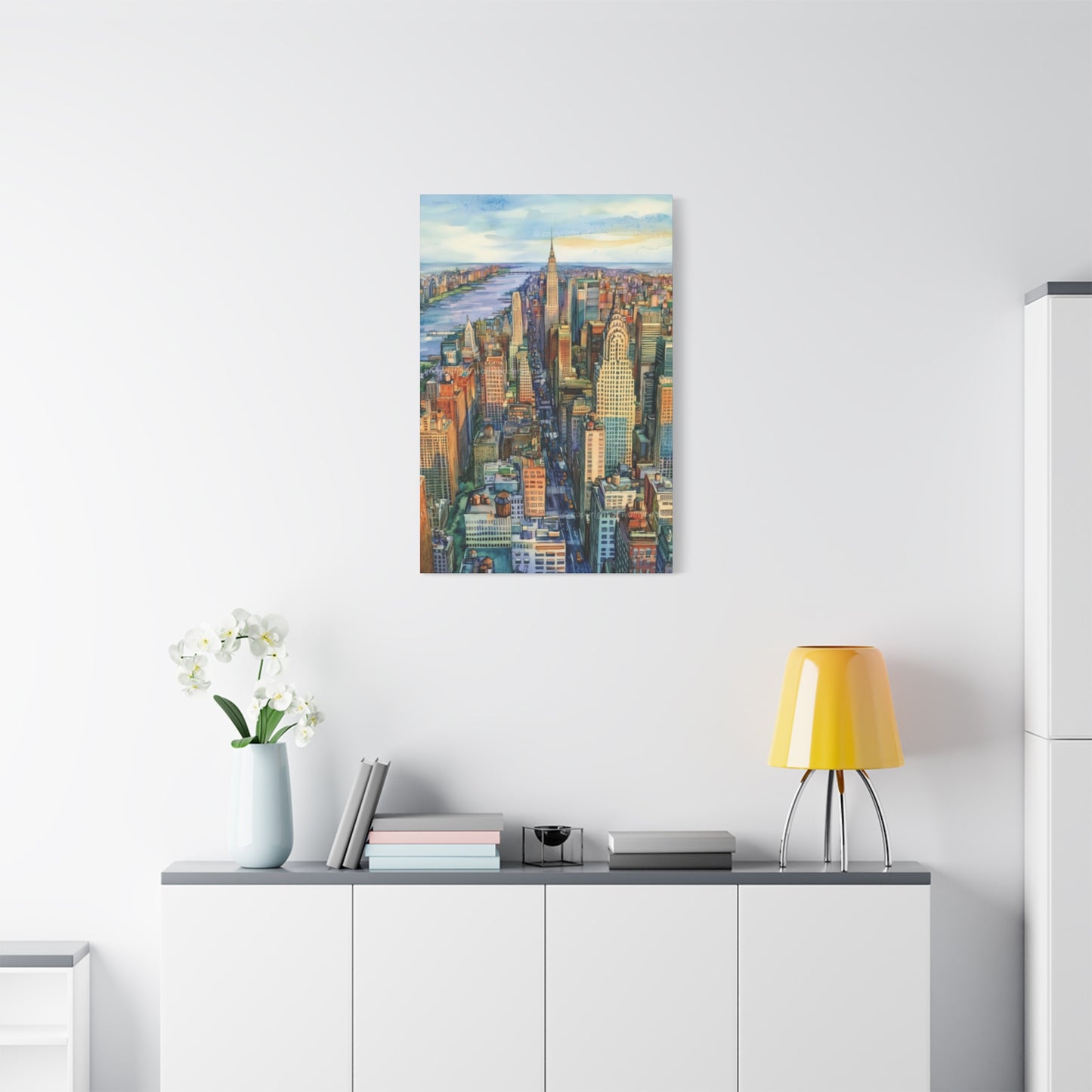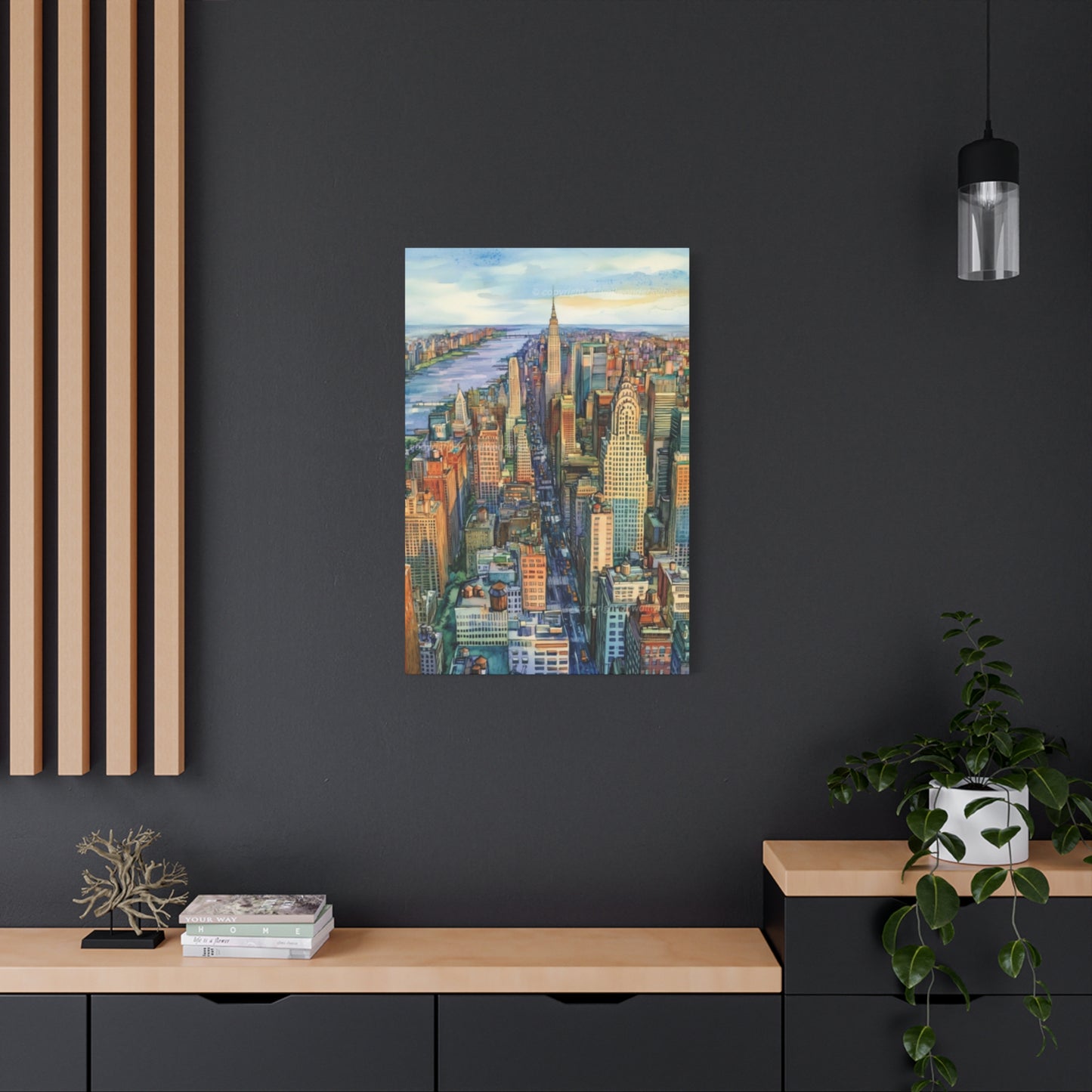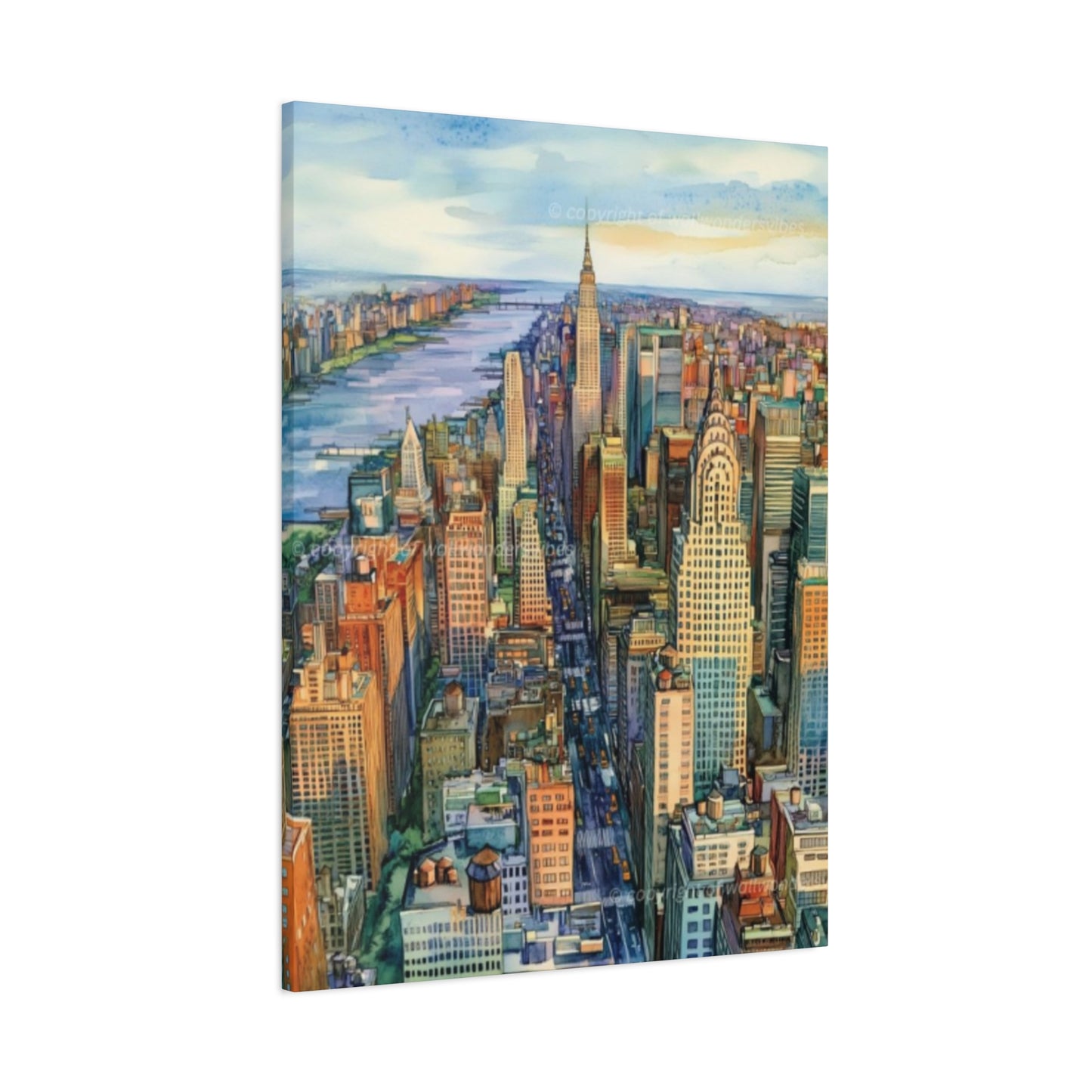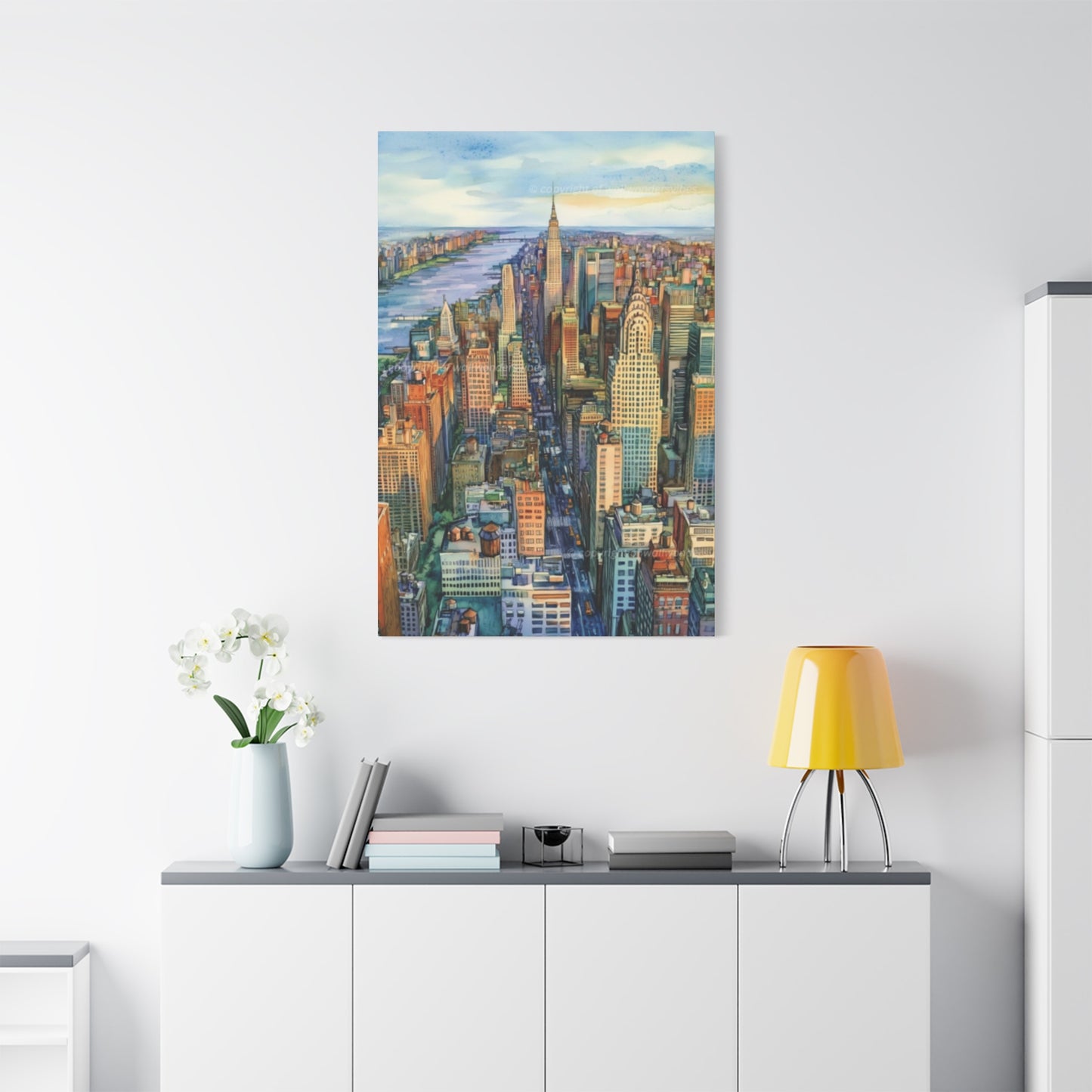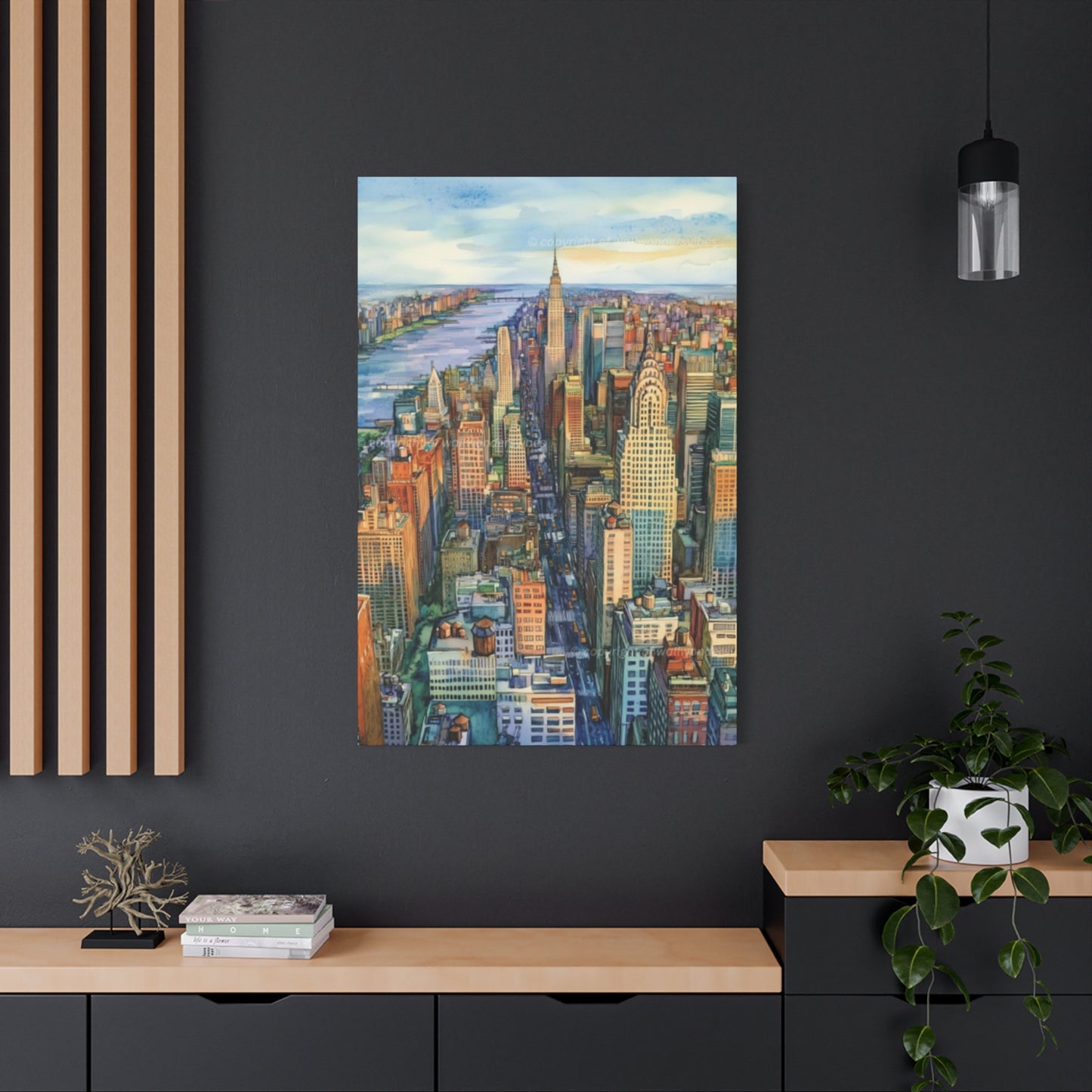Manhattan Skyline Wall Art: Transform Your Space with NYC Cityscape Photography
The allure of New York City has captivated millions of people around the world for generations. Among all the iconic imagery that represents this magnificent metropolis, the Manhattan skyline stands as one of the most recognizable and breathtaking views on the planet. When you bring this stunning vista into your home or office through carefully selected wall art, you create an immediate connection to the energy, ambition, and timeless beauty that defines the Big Apple. The vertical architecture reaching toward the heavens, the interplay of light and shadow across countless windows, and the majestic presence of world-famous structures combine to create visual masterpieces that transform any interior space into something extraordinary.
Decorating with cityscape photography has become increasingly popular among homeowners, interior designers, and business owners who understand the power of visual storytelling. The Manhattan city skyline offers an unparalleled subject for wall art because it represents so much more than buildings and streets. This iconic view embodies dreams, achievement, culture, and the relentless spirit of human innovation. Whether captured during the golden hours of dawn, the vibrant energy of midday, the romantic twilight moments, or the glittering nighttime illumination, each perspective tells a different story and evokes unique emotions.
Why Manhattan Skyline Art Captivates Global Audiences
The fascination with Manhattan skyline wall art extends far beyond mere aesthetics. This particular form of urban photography resonates with people from all walks of life, regardless of whether they have visited New York City or simply admire it from afar. The skyline represents a universal symbol of possibility and achievement that transcends geographical boundaries and cultural differences. When someone gazes upon a well-crafted image of the Manhattan cityscape, they connect with something larger than themselves.
The architectural diversity present in the Manhattan skyline creates visual interest that never becomes tiresome. From the Art Deco elegance of the Chrysler Building to the sleek modernity of One World Trade Center, from the iconic Empire State Building to the distinctive silhouette of the Flatiron Building, each structure contributes its own character to the overall composition. This variety ensures that Manhattan skyline photography offers endless possibilities for artistic interpretation and personal connection.
Photography enthusiasts and professional artists have long recognized that the Manhattan skyline provides exceptional opportunities for creative expression. The way light interacts with glass, steel, and concrete throughout different times of day creates an ever-changing canvas. Morning light casts long shadows and bathes eastern facades in warm golden tones, while evening light creates dramatic silhouettes against vibrant sunset skies. Night photography transforms the skyline into a constellation of illuminated windows and architectural lighting that rivals any natural wonder.
The emotional impact of Manhattan cityscape art cannot be overstated. For those who have lived in or visited New York City, these images trigger powerful memories of personal experiences, career milestones, romantic moments, or life-changing decisions made in the shadow of these towering structures. For those who dream of visiting someday, the artwork serves as daily inspiration and a reminder of goals yet to be achieved. This emotional resonance makes Manhattan skyline wall art far more meaningful than simple decoration.
Historical Evolution of NYC Skyline Photography
The tradition of capturing the Manhattan skyline through photography dates back to the earliest days of the medium itself. As photographic technology evolved throughout the late nineteenth and early twentieth centuries, so too did the techniques and perspectives used to document New York City's dramatic vertical growth. Early photographers faced tremendous technical challenges when attempting to capture the scale and grandeur of the developing skyline, working with cumbersome equipment and limited exposure capabilities.
During the golden age of skyscraper construction in the 1920s and 1930s, photographers like Berenice Abbott and Alfred Stieglitz created iconic images that documented not just buildings, but the transformation of American urban life. Their work established many of the compositional principles and aesthetic standards that continue to influence skyline photography today. These pioneers understood that capturing the Manhattan skyline was about more than technical precision; it required an artistic vision that could convey the energy, ambition, and human drama unfolding within these architectural monuments.
The post-World War II era brought new perspectives to Manhattan skyline photography as color film became more accessible and helicopter photography opened up dramatic aerial viewpoints. Photographers could now capture the relationship between the dense urban core and the surrounding waterways, revealing the island geography that makes Manhattan's concentrated development so remarkable. These elevated perspectives became increasingly popular in wall art as they offered viewers a god-like vantage point rarely experienced in person.
The digital revolution of the late twentieth and early twenty-first centuries democratized skyline photography while simultaneously raising the bar for technical excellence. High-resolution sensors, sophisticated editing software, and advanced printing technologies allowed photographers to capture and reproduce the Manhattan cityscape with unprecedented detail and color accuracy. This technological leap forward coincided with growing consumer interest in large-format wall art, creating a perfect storm of artistic possibility and market demand.
Contemporary skyline photography incorporates techniques and technologies that early practitioners could never have imagined. Drone photography provides previously impossible perspectives, time-lapse sequences capture the rhythm of urban life across hours or days, and high dynamic range imaging reveals detail in both deep shadows and brilliant highlights. Despite these modern innovations, the fundamental appeal remains unchanged: the Manhattan skyline continues to inspire awe and wonder in those who witness it, whether in person or through carefully crafted photographic art.
Selecting the Perfect Manhattan Skyline Wall Art for Your Space
Choosing the right Manhattan cityscape photography for your home or office involves careful consideration of multiple factors that extend beyond simple personal preference. The size of your space, existing decor elements, lighting conditions, and the emotional atmosphere you wish to create all play crucial roles in determining which piece will work best. A thoughtful selection process ensures that your investment in wall art delivers maximum visual impact and long-term satisfaction.
The scale of your chosen artwork should correspond appropriately to the wall space you intend to fill. A common mistake involves selecting pieces that are too small for the available area, resulting in artwork that appears insignificant and fails to command the attention it deserves. For large walls in living rooms, offices, or lobbies, consider oversized prints that measure five feet or more in width. These substantial pieces create commanding focal points that anchor entire rooms and demand notice from anyone who enters the space.
Color palette consideration plays an essential role in ensuring your Manhattan skyline wall art harmonizes with existing interior design elements. Black and white photography offers timeless elegance and sophistication that complements virtually any color scheme. The absence of color allows viewers to focus on composition, texture, and tonal contrast, creating images that feel both classic and contemporary. Monochrome skyline photography pairs beautifully with minimalist interiors, modern furniture, and neutral color palettes.
For spaces that benefit from color infusion, consider skyline photography captured during golden hour or twilight when the sky blazes with vibrant oranges, pinks, purples, and blues. These warm tones create welcoming, energetic atmospheres perfect for living spaces, creative offices, or hospitality environments. The interplay between natural sky colors and artificial building illumination creates visual complexity that rewards repeated viewing, as new details emerge with each glance.
The perspective and composition of your chosen Manhattan cityscape significantly impacts how the artwork affects your space. Wide panoramic views that capture extensive stretches of the skyline create a sense of grandeur and openness, making them ideal for spacious rooms with long walls. These horizontal compositions draw the eye across the image, creating visual movement that can make rooms feel larger and more dynamic. Close-up perspectives that focus on specific architectural details or smaller sections of the skyline work beautifully in more intimate spaces or as part of gallery wall arrangements.
Consider the time of day depicted in your chosen skyline photography, as this element dramatically affects mood and atmosphere. Daytime images featuring bright blue skies and clearly defined architectural details create fresh, energetic environments suitable for workspaces and active living areas. Twilight images capturing that magical moment when natural and artificial light balance perfectly offer sophistication and romance, making them excellent choices for bedrooms, dining rooms, or executive offices. Night photography showcasing the glittering illumination of Manhattan after dark creates drama and excitement, perfect for entertainment spaces or urban-style lofts.
Framing and Presentation Options for Skyline Photography
The manner in which you present your Manhattan skyline wall art significantly impacts its visual effectiveness and longevity. Professional framing and mounting options range from traditional approaches to contemporary gallery-style presentations, each offering distinct aesthetic qualities and practical benefits. Your choice should reflect both your personal style preferences and the specific requirements of your installation space.
Traditional framing with matting provides classic elegance that has stood the test of time. A quality frame in wood, metal, or composite material creates a defined border that separates the artwork from surrounding wall space, allowing the image to command focused attention. Matting, typically in neutral white, cream, or black, creates visual breathing room between the image and frame, preventing the composition from feeling crowded or confined. This presentation style works beautifully in traditional, transitional, and even modern interiors, offering versatility that ensures your investment remains stylistically relevant as design trends evolve.
Float mounting represents a contemporary alternative that creates the impression of the photograph hovering slightly away from the wall surface. This three-dimensional presentation adds depth and shadow play that enhances visual interest throughout the day as natural light conditions change. Float mounting works exceptionally well with Manhattan skyline photography because it echoes the vertical dimension inherent in the subject matter, creating subtle parallels between the art and the architecture it depicts.
Canvas gallery wraps have gained tremendous popularity for skyline photography due to their modern aesthetic and substantial presence. In this presentation method, the photograph is printed on canvas and stretched around a wooden frame, with the image typically extending around the sides of the piece. This frameless presentation creates clean, contemporary lines that work beautifully in modern and industrial interiors. High-quality canvas prints capture the texture and tonal depth of Manhattan cityscape photography while offering durability and resistance to glare issues that sometimes plague traditional glass-covered prints.
Metal prints represent one of the most striking contemporary options for presenting skyline photography. Through a specialized dye-sublimation process, the image is infused directly into specially coated aluminum sheets, creating luminous, high-definition reproductions with extraordinary depth and vibrancy. The inherent qualities of metal printing perfectly complement urban photography subjects like the Manhattan skyline, as the medium adds dimensional quality and contemporary edge. Metal prints require no additional framing, mounting directly to walls via concealed hanging systems that create a floating effect.
Acrylic face mounting creates museum-quality presentations that maximize color depth and visual impact. In this premium approach, the photograph is mounted behind a thick sheet of clear acrylic, creating a glossy, three-dimensional appearance with extraordinary depth and luminosity. Light refracts through the acrylic layers, enhancing colors and creating a window-like quality that makes viewers feel as though they could step into the scene. This presentation style commands premium prices but delivers unmatched visual impact for Manhattan skyline wall art intended to serve as a primary focal point in sophisticated interiors.
Ideal Locations Within Your Home for Cityscape Art
Strategic placement of Manhattan skyline wall art maximizes its visual impact and ensures it enhances rather than overwhelms your interior spaces. Different rooms serve different purposes and evoke different moods, making some locations more suitable than others for specific types of skyline photography. Thoughtful placement transforms wall art from mere decoration into an integral component of your home's overall design story.
Living rooms represent the most popular location for substantial Manhattan cityscape photography due to their central role in daily life and entertainment. A commanding skyline image positioned above a sofa or fireplace creates an immediate focal point that anchors the entire room's design. The expansive nature of skyline photography complements the typically spacious dimensions of living areas, providing visual interest that fills large wall expanses without feeling cluttered or busy. When guests enter your living room and encounter a stunning Manhattan skyline image, it immediately communicates sophistication and cosmopolitan sensibility.
Bedrooms benefit from carefully selected skyline photography that promotes the restful, romantic atmosphere appropriate for private spaces. Twilight images capturing the Manhattan cityscape during that magical transition between day and night create soothing environments conducive to relaxation. The soft, muted colors of dusk skyline photography pair beautifully with bedroom color schemes that emphasize calm and comfort. Positioning skyline art above the bed creates a personal focal point that you experience daily upon waking and before sleep, allowing the image to become part of your daily rhythms and mental associations.
Home offices and study spaces gain inspiration and motivation from dynamic Manhattan skyline wall art that embodies achievement and ambition. The vertical architecture and concentrated energy visible in cityscape photography serve as subtle daily reminders of professional goals and aspirations. Daytime skyline images featuring clear blue skies and sharp architectural definition work particularly well in office environments, promoting focus and productivity. The presence of iconic Manhattan structures within your workspace creates psychological connections to innovation, commerce, and success.
Dining rooms transform into sophisticated entertainment venues when adorned with carefully selected Manhattan cityscape photography. The social nature of dining spaces makes them ideal locations for conversation-starting artwork that guests can admire and discuss. Skyline photography offers universal appeal that crosses generational and cultural boundaries, ensuring that visitors from diverse backgrounds find common ground in appreciating the beauty and significance of the Manhattan skyline. Evening images featuring city lights and dramatic skies create ambiance appropriate for intimate dinners and festive gatherings alike.
Entryways and foyers establish immediate impressions when visitors first enter your home, making them strategic locations for impactful Manhattan skyline wall art. A striking cityscape image positioned opposite your entry door ensures that guests immediately encounter your aesthetic sensibility and cosmopolitan outlook. The first impression created by dramatic skyline photography sets an elevated tone for the entire home, suggesting attention to detail and appreciation for artistic merit. Narrow hallways benefit from horizontal panoramic skyline compositions that draw the eye forward and create a sense of expanded space.
Unexpected locations like bathrooms, walk-in closets, and mudrooms offer opportunities to extend your design vision into every corner of your home. Smaller-scale Manhattan skyline prints bring urban sophistication to utilitarian spaces that often receive minimal decorative attention. These unexpected placements demonstrate commitment to cohesive interior design and create delightful surprises that elevate everyday experiences.
Commercial Applications for Manhattan Skyline Photography
Business environments benefit tremendously from the strategic deployment of Manhattan cityscape wall art that reinforces brand identity, creates memorable impressions, and enhances employee morale. The symbolic associations carried by the Manhattan skyline align perfectly with corporate values of ambition, innovation, excellence, and achievement, making it an ideal subject for commercial interior design.
Corporate offices and executive suites leverage Manhattan skyline photography to project success, stability, and forward-thinking vision. Conference rooms adorned with commanding cityscape images create impressive backdrops for important meetings, client presentations, and video conferences. The presence of iconic New York architecture subtly communicates that your organization operates at the highest levels of professionalism and aspires to excellence in all endeavors. Large-format skyline prints in reception areas and lobbies create immediate impact that shapes visitor perceptions before any verbal communication occurs.
Financial services firms, law offices, and consulting companies find particular resonance with Manhattan skyline wall art due to the strong associations between New York City and global commerce, legal expertise, and business strategy. The skyline serves as visual shorthand for the interconnected world of international business, reminding employees and clients alike of the high stakes and significant responsibilities inherent in professional services. Night photography showcasing illuminated skyscrapers suggests around-the-clock dedication and tireless commitment to client success.
Hospitality venues including hotels, restaurants, and event spaces create sense of place through carefully curated Manhattan cityscape photography that connects guests to the local environment. For establishments located within New York City, skyline art reinforces authentic connection to the destination. For venues located elsewhere, Manhattan imagery adds urban sophistication and cosmopolitan flair that elevates the perceived quality of the experience. Restaurants targeting business clientele or seeking to project upscale positioning find that dramatic skyline photography contributes significantly to overall ambiance and brand perception.
Real estate offices and property management companies utilize Manhattan skyline wall art to inspire potential buyers and renters while reinforcing their expertise in urban real estate markets. The images serve as aspirational representations of the lifestyle and opportunities that real estate professionals help clients access. Sales offices and model homes benefit from skyline photography that helps potential buyers visualize their future lives within the urban environment.
Fitness centers, yoga studios, and wellness facilities sometimes incorporate Manhattan skyline photography to represent the balance between urban energy and personal well-being. Early morning skyline images capturing the city awakening can inspire workout motivation, while serene twilight cityscapes promote the calm focus beneficial for yoga and meditation practices. The key lies in selecting images and presentation styles that align with the facility's specific wellness philosophy and target demographic.
Educational institutions including business schools, design programs, and urban planning departments find that Manhattan cityscape photography serves both decorative and pedagogical purposes. The skyline provides tangible examples of architectural styles, urban development patterns, and design evolution that support academic curricula. Student common areas and administrative offices benefit from the inspirational qualities of skyline art that remind students of the real-world contexts where they will eventually apply their education.
Photographic Techniques Behind Stunning Skyline Captures
Creating exceptional Manhattan skyline wall art requires far more than simply pointing a camera toward the city and pressing the shutter button. Professional photographers employ sophisticated techniques, specialized equipment, and deep understanding of light, composition, and timing to produce images worthy of prominent display in homes and offices. Appreciating the technical mastery behind your chosen skyline photography enhances your connection to the artwork and understanding of its value.
The foundation of any outstanding skyline photograph begins with strategic location scouting that identifies optimal vantage points for capturing the Manhattan cityscape. Photographers familiar with New York City know that certain locations offer privileged perspectives unavailable elsewhere. Popular vantage points across the East River provide classic frontal views of Midtown and Lower Manhattan, while elevated positions in Brooklyn and Queens offer dramatic angles that showcase the relationship between the urban core and surrounding geography. Waterfront locations in New Jersey provide western perspectives particularly stunning during sunset hours when golden light illuminates building facades.
Timing represents another critical factor in skyline photography excellence. The quality and direction of natural light transform dramatically throughout the day, with each time period offering distinct aesthetic qualities. The golden hour immediately following sunrise bathes eastern facades in warm, directional light that creates modeling and dimension while casting long shadows that add drama to architectural forms. Late afternoon and early evening golden hour light creates similar magic from the western direction, often coinciding with more vibrant sky colors as the sun approaches the horizon.
The brief twilight period known to photographers as blue hour provides perhaps the most sought-after lighting conditions for Manhattan skyline photography. During this magical window approximately thirty to forty minutes after sunset, ambient light levels balance perfectly with artificial building illumination. The sky retains rich blue tones rather than going completely black, creating beautiful color contrast with warm yellow and orange window lights. This delicate balance requires precise timing and exposure calculation, as the optimal window lasts only minutes and varies throughout the year based on seasonal sunset times.
Long exposure techniques allow photographers to create ethereal effects that transcend what the human eye perceives in real-time. When capturing the Manhattan skyline at night, extended shutter speeds ranging from several seconds to minutes create smooth, milky water surfaces that contrast dramatically with sharp architectural forms. Moving clouds become soft streaks across the sky, adding dynamic motion to otherwise static compositions. Vehicle lights on bridges and streets transform into continuous light trails that suggest energy and movement. These artistic choices elevate skyline photography from documentary record to interpretive art.
High dynamic range imaging addresses one of the fundamental technical challenges in skyline photography: the extreme contrast between bright sky and shadowed buildings, or between illuminated windows and dark nighttime skies. By capturing multiple exposures at different brightness levels and combining them in post-processing, photographers create images that retain detail throughout the entire tonal range from deepest shadows to brightest highlights. This technique produces natural-looking results that more closely approximate what our eyes perceive when viewing scenes with high contrast, delivering wall art with superior visual quality.
Specialized lens choices contribute significantly to the character and quality of Manhattan skyline photography. Wide-angle lenses capture expansive panoramic views that include extensive stretches of the cityscape, creating compositions that emphasize the sheer scale and density of urban development. Telephoto lenses compress perspective, making distant buildings appear closer together and creating abstract patterns from the repetition of windows and architectural elements. Tilt-shift lenses correct perspective distortion that causes vertical lines to converge when shooting upward at tall buildings, producing technically precise architectural documentation valued by purists.
Manhattan Cityscape Art Selection
The psychological and emotional impacts of color profoundly influence how Manhattan skyline wall art affects the atmosphere and energy of interior spaces. Understanding basic color psychology principles helps you select skyline photography that creates your desired environmental mood while complementing existing decor elements. The interplay between natural sky colors, artificial building illumination, and photographic processing choices creates endless variations in the color character of cityscape imagery.
Blue dominates many Manhattan skyline photographs due to its natural prevalence in sky imagery and its artificial presence in architectural lighting. Psychologically, blue promotes feelings of calm, stability, trust, and professionalism, making it ideal for office environments, bedrooms, and spaces where reduced stress and clear thinking are priorities. The cool tones of blue skyline photography create refreshing visual environments particularly appreciated in warm climates or rooms receiving abundant natural light. Deep blue twilight skies provide sophisticated backdrops that allow warm building lights to create vibrant contrast, delivering visual interest without overwhelming color saturation.
Warm tones including oranges, yellows, and reds frequently appear in Manhattan skyline photography captured during golden hour or featuring sunset skies. These colors evoke emotions of warmth, energy, optimism, and comfort, creating inviting atmospheres in living rooms, dining areas, and social spaces. The psychological associations with warmth make these color palettes particularly effective in spaces where you entertain guests or seek to create welcoming environments. Sunrise skyline photography featuring warm tones carries connotations of new beginnings, fresh starts, and optimistic outlook that make it especially appropriate for home offices and creative workspaces.
Monochromatic and black-and-white Manhattan cityscape photography eliminates color considerations entirely, allowing composition, texture, and tonal contrast to dominate visual impact. The absence of color creates timeless elegance that never appears dated or tied to specific design trends. Black-and-white skyline photography complements absolutely any existing color scheme, providing ultimate flexibility for interior design changes over time. The high contrast typical of quality black-and-white photography creates dramatic impact that commands attention while maintaining sophisticated restraint.
Purple and magenta tones sometimes appear in twilight Manhattan skyline photography when atmospheric conditions create vivid sunset and twilight colors. These cooler warm tones occupy an interesting psychological space, combining the calm stability of blue with the energetic warmth of red. Purple carries associations with luxury, creativity, wisdom, and sophistication, making it effective in upscale interiors, creative spaces, and anywhere you wish to project refined taste. Skyline photography featuring purple twilight skies offers distinctive visual character that sets it apart from more common blue and orange imagery.
Green rarely appears naturally in Manhattan skyline photography given the predominance of grey, glass, and steel building materials. When present, green typically appears in foreground vegetation or artificial lighting applications. Some photographers introduce subtle green tones during post-processing to create unique aesthetic character. Psychologically, green promotes feelings of balance, harmony, growth, and renewal, though its relative rarity in authentic skyline photography makes it less common than other color palettes in this genre.
The intensity and saturation of colors in Manhattan cityscape photography significantly impact psychological response beyond the specific hues present. Highly saturated, vivid colors create energetic, attention-grabbing visual experiences that work well in modern, dynamic environments targeting younger demographics. Desaturated, muted color palettes project sophistication and restraint appreciated in traditional, transitional, and minimalist interiors. Understanding your personal response to color intensity helps you select skyline photography that creates your desired emotional atmosphere.
Size and Scale Considerations for Maximum Impact
The physical dimensions of your Manhattan skyline wall art dramatically influence its presence and effectiveness within interior spaces. Undersized artwork fails to command appropriate attention or fill available wall space effectively, while oversized pieces can overwhelm rooms and throw off spatial proportions. Developing an understanding of appropriate scaling relationships ensures your skyline photography achieves optimal visual impact.
The general principle guiding wall art sizing suggests that artwork should occupy between two-thirds and three-quarters of the available wall space above furniture pieces. When hanging Manhattan cityscape photography above a sofa, measure the furniture width and multiply by 0.66 to 0.75 to determine the ideal artwork width. This proportion ensures the art appears substantial and intentional rather than tentative or insignificant. For a standard three-seat sofa measuring seven feet wide, ideal artwork width ranges from approximately four-and-a-half to five-and-a-half feet, creating visual harmony between furniture and art.
Ceiling height significantly impacts optimal artwork dimensions, particularly in rooms with above-average vertical space. Standard eight-foot ceilings accommodate most artwork sizes comfortably, but rooms with nine, ten, or twelve-foot ceilings benefit from taller images that acknowledge and complement the vertical dimension. Vertical compositions featuring Manhattan skyscrapers reaching upward naturally suit tall walls, creating visual coherence between the architectural subject matter and display environment. The vertical thrust of skyline architecture echoes the vertical proportions of the room itself.
Gallery walls incorporating multiple Manhattan skyline photographs require careful planning to achieve visual cohesion without creating chaotic clutter. When combining multiple cityscape images, maintain consistent framing style, color palette, or time-of-day lighting to create thematic unity. Vary the sizes while maintaining some proportional relationships; for example, create a grid of same-sized prints, or arrange smaller supporting images around one substantially larger focal image. The combined visual weight of multiple pieces should still observe the two-thirds to three-quarters proportion guideline relative to furniture width.
Distance viewing considerations influence appropriate size selection for Manhattan skyline wall art installed in large rooms or visible from significant distances. Artwork that appears adequately sized when viewed up close may seem insignificant when viewed from across a spacious living room or lobby. As a general guideline, increase artwork dimensions as viewing distance increases. In large great rooms or commercial spaces where primary viewing occurs from fifteen to twenty feet away, consider panoramic prints spanning eight to twelve feet in width, creating presence visible from across the space.
Narrow walls, hallway spaces, and vertical sections between windows or doorways benefit from specialized sizing approaches. These architectural features often go undecorated because standard horizontal artwork doesn't fit available dimensions. Manhattan skyline photography excels in vertical formats that feature the upward thrust of skyscrapers, making it ideal for narrow wall sections. A tall vertical print measuring twenty-four inches wide by seventy-two inches tall can transform an otherwise awkward narrow wall into an intentional design feature celebrating architectural verticality.
The practical considerations of weight, installation, and future flexibility should inform sizing decisions for large-format Manhattan cityscape photography. Extremely large prints may require professional installation, specialized hanging hardware, or even structural reinforcement depending on wall construction and print mounting method. Consider whether you might need to relocate or transport the artwork in the future, as pieces exceeding certain dimensions present moving challenges. Some printing vendors offer modular approaches where very large compositions are divided across multiple panels that hang adjacent to each other, simplifying transportation while creating impressive combined impact.
Material and Print Quality Factors
The physical substrate and printing methodology employed in reproducing Manhattan skyline wall art profoundly affect its visual quality, longevity, and appropriateness for different environments. Premium materials and professional printing processes command higher prices but deliver superior results that justify the investment through enhanced beauty and extended lifespan.
Archival quality photographic papers represent the traditional gold standard for fine art reproduction, utilizing acid-free materials and pigment-based inks engineered for maximum color stability and longevity. Museum-grade papers resist fading, yellowing, and deterioration for decades or even centuries when properly displayed away from direct sunlight and environmental extremes. The subtle texture and warmth of paper prints appeal to traditionalists and collectors who value time-tested materials. Matte finish papers eliminate glare issues that sometimes plague glossy alternatives, making them ideal for brightly lit spaces or positions across from windows.
Glossy and luster finish photographic papers maximize color vibrancy and apparent depth, creating luminous Manhattan skyline prints with extraordinary visual impact. The reflective surface enhances contrast and makes colors appear richer and more saturated than matte alternatives. This increased intensity particularly benefits night photography and images with significant areas of deep shadow, where the enhanced depth perception creates more dramatic results. The tradeoff involves increased glare susceptibility requiring more careful positioning relative to light sources and viewing angles.
Canvas printing has become enormously popular for skyline photography due to its substantial physical presence and contemporary aesthetic. Quality canvas prints use thick, tightly woven fabric that accepts ink beautifully while providing texture that adds dimensional interest absent from smooth photographic papers. The fabric base offers inherent flexibility and durability that resist cracking or tearing even in large formats. Canvas works particularly well for casual and contemporary interiors where the texture and frameless presentation suit relaxed, modern sensibilities. Protective coatings applied after printing resist moisture, UV light, and physical abrasion, extending the lifespan of canvas prints in challenging environments.
Metal prints created through dye-sublimation processes produce some of the most visually stunning Manhattan cityscape reproductions available. The image is infused directly into specially coated aluminum sheets, creating permanent bonds that cannot peel, crack, or separate. The inherent properties of metal create exceptional color depth and luminosity, particularly effective for night skyline photography where building lights and reflections seem to glow from within the print surface. Metal prints resist moisture, making them suitable for bathrooms, kitchens, and even covered outdoor spaces where traditional prints would deteriorate. The modern, industrial aesthetic perfectly complements urban photography subjects.
Acrylic printing and face mounting create ultra-premium presentations with unmatched depth and clarity. High-quality photographs are mounted to rigid substrates and covered with thick acrylic sheets that protect while creating remarkable three-dimensional effects. Light refracts through multiple layers, enhancing color saturation and apparent depth in ways that make Manhattan skyline photography seem almost holographic. The glass-like clarity and polished edges create museum-quality presentations commanding premium prices but delivering absolutely stunning results that justify the investment for discerning collectors.
Print resolution directly impacts the clarity and detail visible in your Manhattan skyline wall art, particularly in large formats intended for viewing from moderate distances. Professional printing requires source files with sufficient pixel dimensions to support the intended print size at appropriate resolution, typically 300 pixels per inch for photographic quality. A print measuring forty inches by sixty inches at 300 PPI requires a source file with dimensions of 12,000 by 18,000 pixels. Insufficient resolution results in soft, fuzzy images lacking the crisp detail that brings cityscape photography to life. Reputable print vendors specify minimum file requirements and refuse to print from inadequate sources.
Color management throughout the production pipeline ensures that the Manhattan cityscape photography you receive accurately reproduces the photographer's artistic vision. Professional workflows employ calibrated monitors, color-managed editing software, and printer profiles specific to chosen paper or substrate types. Without proper color management, images may suffer from color shifts where blues appear purple, reds appear orange, or overall color balance shifts warm or cool relative to the original. Request proof prints before authorizing production of expensive large-format pieces, allowing you to verify color accuracy before committing to final production.
Maintenance and Preservation of Skyline Photography
Proper care and maintenance ensure that your investment in Manhattan skyline wall art retains its beauty and value for generations. While different materials and presentation styles require specific care approaches, some universal principles apply to preserving photographic artwork regardless of substrate or mounting method.
Environmental control represents the single most important factor in long-term preservation of Manhattan cityscape photography. Direct sunlight exposure causes irreversible fading even in archival-quality prints using lightfast inks and materials. Position skyline artwork away from windows receiving direct sun, or employ UV-filtering window films, curtains, or shades that limit light exposure during peak intensity hours. Artificial lighting poses less risk than natural sunlight, but still contributes to cumulative light exposure over decades. Consider your display location's lighting environment when selecting artwork, and understand that positions receiving intense light exposure may require replacement sooner than protected locations.
Temperature and humidity fluctuations stress photographic materials, causing expansion and contraction that can lead to warping, delamination, or cracking over time. Maintain consistent environmental conditions within human comfort ranges, avoiding locations near heating vents, air conditioning registers, fireplaces, or exterior walls that experience temperature extremes. Humidity levels above sixty percent encourage mold growth and paper expansion, while extremely low humidity causes brittleness and contraction stress. Most photographic materials thrive in the same temperature and humidity ranges that humans find comfortable, making proper climate control beneficial for both occupants and artwork.
Regular but gentle cleaning removes accumulated dust and environmental contaminants that degrade appearance over time. For framed prints behind glass or acrylic, clean glazing surfaces with products specifically formulated for glass or acrylic rather than all-purpose cleaners that may contain ammonia or other aggressive chemicals. Spray cleaner on a soft, lint-free cloth rather than directly on the glazing to prevent liquid seepage beneath the frame. For unglazed prints including canvas and metal, use only dry microfiber cloths or specialized electrostatic dusters that attract and trap particles without scratching surfaces.
Canvas prints benefit from occasional professional cleaning that removes accumulated surface contamination without damaging printed surfaces or protective coatings. DIY canvas cleaning risks damaging the print through improper technique or unsuitable cleaning products. Metal prints prove remarkably easy to maintain, as their durable surfaces resist most common household contaminants and clean easily with slightly damp cloths. Avoid abrasive cleaners or scrubbing that could scratch protective coatings on metal prints.
Secure mounting prevents accidents that damage both artwork and surrounding architecture. Use hanging hardware appropriate to the weight of your Manhattan skyline wall art, exceeding minimum specifications to provide safety margin. Heavy pieces exceeding thirty or forty pounds require mounting directly into wall studs rather than relying on drywall anchors that may fail unexpectedly. Professional picture hangers can assess your specific situation and recommend appropriate mounting solutions that protect both artwork and walls. In earthquake-prone regions or homes with children and pets, consider additional security measures including quake-proof hangers or mounting cables that prevent artwork from being knocked off walls.
Insurance documentation protects your investment in premium Manhattan cityscape photography by enabling replacement or restoration should damage or loss occur. Photograph your artwork after installation, including detail shots showing artist signatures, edition numbers, or other identifying marks. Retain all purchase documentation including invoices, authenticity certificates, and communications with artists or galleries. Some homeowner's insurance policies provide limited coverage for artwork, while high-value pieces may require additional insurance riders with coverage specifically tailored to fine art. Consult your insurance agent to ensure adequate protection for valuable skyline photography.
The Role of Lighting in Displaying Skyline Photography
Strategic lighting transforms Manhattan skyline wall art from simple decoration into dynamic focal points that command attention and create atmosphere. The type, intensity, direction, and color temperature of lighting applied to cityscape photography dramatically affect how viewers perceive and experience the artwork. Proper lighting reveals subtle details, enhances colors, and creates visual depth that maximizes your investment's impact.
Picture lights represent the traditional approach to artwork illumination, mounting directly to frames or walls above the art to cast downward light across the image surface. Modern LED picture lights provide even illumination across entire compositions while consuming minimal energy and generating virtually no heat that might damage photographic materials. Adjustable models allow customization of light direction and intensity to eliminate glare while optimizing visibility of important image areas. Wireless, battery-operated picture lights offer flexible installation without requiring electrical wiring, particularly valuable when highlighting skyline photography in locations far from electrical outlets.
Track lighting and adjustable spotlights provide flexible accent lighting suitable for gallery-style presentations of Manhattan cityscape photography. Multiple adjustable fixtures mounted to ceiling tracks or wall-mounted rails allow precise positioning of light to illuminate artwork from optimal angles while avoiding glare and reflections. This approach works beautifully when displaying multiple skyline photographs arranged in gallery walls, as each piece receives individually optimized lighting. Dimmer controls enable adjustment of light intensity to create different moods and accommodate changing natural light levels throughout the day.
Conclusion
In conclusion, Manhattan skyline wall art offers a captivating way to bring the dynamic energy and iconic beauty of New York City into any living or working space. NYC’s skyline is more than just a collection of buildings; it symbolizes ambition, diversity, and the relentless spirit of a city that never sleeps. Through stunning cityscape photography, artists and photographers capture the essence of Manhattan’s architectural grandeur and vibrant life, providing viewers with a daily reminder of urban inspiration and possibility.
One of the key reasons Manhattan skyline photography resonates so strongly as wall art is its ability to evoke emotion and memory. Whether you are a native New Yorker, someone who has visited and fallen in love with the city, or an admirer of urban landscapes, these images create a personal connection. The recognizable landmarks like the Empire State Building, One World Trade Center, and the Chrysler Building evoke nostalgia, dreams, and ambition. Displaying such artwork can transform a room into a space charged with energy and motivation, inviting you to dream big and embrace the hustle.
Beyond the emotional appeal, Manhattan skyline wall art is prized for its versatility in interior design. Its bold lines, contrasting shadows, and the interplay of natural and artificial light make it a striking visual element that complements a wide range of decor styles—from modern minimalist apartments to industrial lofts and classic contemporary spaces. Black-and-white photographs add timeless elegance, while color images capture the vibrancy of city lights and sunsets, allowing you to customize the atmosphere of your room according to your taste.
Furthermore, the popularity of NYC cityscape photography reflects a broader cultural fascination with urban environments and their stories. Manhattan’s skyline is an architectural narrative, telling stories of innovation, resilience, and diversity. It represents a melting pot of cultures and histories, embodied in towering skyscrapers and bustling streets. By incorporating this art into your home or office, you bring a piece of that story into your everyday environment, fostering a sense of connection to one of the world’s most dynamic cities.
The technical aspects of Manhattan skyline photography also contribute to its artistic value. Skilled photographers use lighting, perspective, and timing to highlight the city’s unique character. Night shots showcase the glowing grid of city lights; sunrise and sunset images offer warm, soft hues; and aerial perspectives provide sweeping views that capture the city’s scale. This variety means there is a perfect Manhattan skyline image for every space and mood, whether you seek calm and reflection or energy and excitement.
Investing in high-quality Manhattan skyline wall art also means embracing durability and craftsmanship. Prints on canvas, metal, or fine art paper ensure the longevity of the artwork, maintaining vivid colors and sharp details over time. Many artists and galleries offer limited editions or signed prints, adding exclusivity and value. Choosing the right material and size for your space will enhance the visual impact and make your investment worthwhile.
From a practical perspective, Manhattan skyline wall art is an excellent conversation starter. It invites stories and memories about New York City and can inspire guests with its iconic imagery. Whether placed in a living room, office, reception area, or creative studio, this artwork elevates the ambiance, making the space feel more vibrant, sophisticated, and connected to the pulse of urban life.
Moreover, the availability of customizable options has made it easier than ever to personalize Manhattan skyline wall art. Many artists and retailers allow clients to select specific views, color treatments, and framing options. Some even offer personalized commissions, tailoring images to your preferred moments, whether it’s a foggy morning, a clear summer evening, or a festive holiday season in NYC. This personalization adds emotional value and uniqueness to the artwork, making it truly your own.
Lastly, incorporating Manhattan skyline photography into your space speaks to a broader appreciation of urban culture and architectural beauty. It honors human achievement and creativity, inspiring those who live and work amidst the cityscape or who dream of visiting one day. This art form is not just decoration—it’s an experience, a journey through light and shadow, steel and glass, dreams and reality.
In summary, Manhattan skyline wall art is a versatile, meaningful, and visually stunning addition to any space. It captures the essence of one of the world’s most iconic cities, bringing energy, inspiration, and sophistication to your home or workplace. Whether you seek to celebrate your connection to New York City or simply want to enhance your environment with breathtaking urban photography, investing in Manhattan cityscape art is a choice that transforms your space and elevates your daily experience.

















